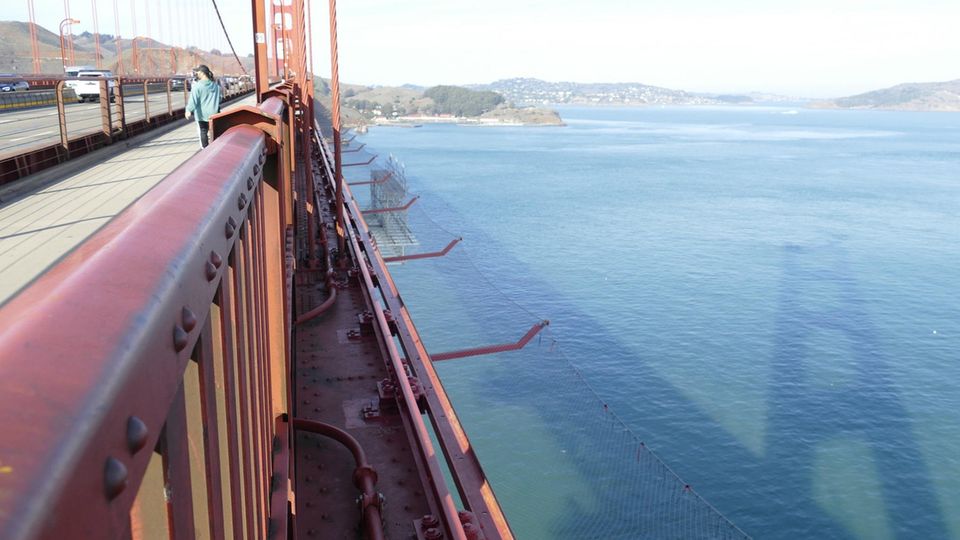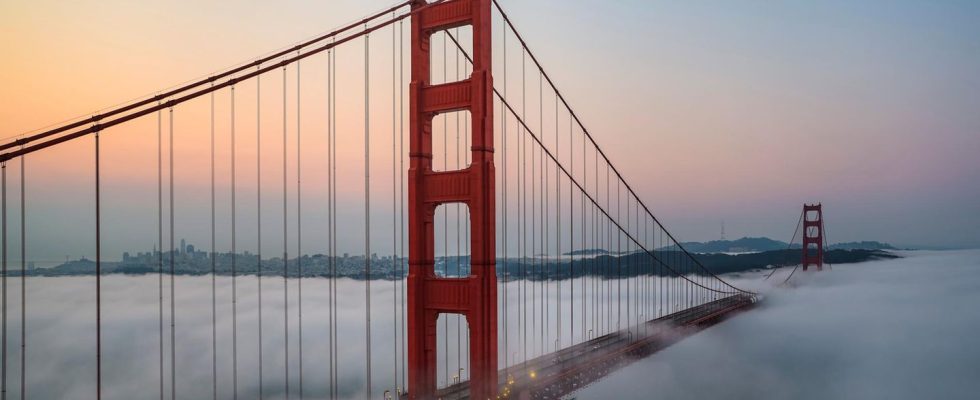USA landmark
San Francisco wants to curb suicides on the Golden Gate Bridge
Relatives of people who killed themselves on the Golden Gate Bridge have long advocated for increased security measures
© Wirestock / Imago Images
At least 2,000 people have committed suicide on one of America’s most famous landmarks, the Golden Gate Bridge. An almost invisible measure is now intended to curb the problem.
In May 1937, when the Golden Gate Bridge had only been completed for ten weeks, 47-year-old war veteran Harold Wobber made the first one Suicide on the bridge. He shouldn’t be the only one. Only now, 86 years later, are the authorities almost finished with a measure that could save people like Harold Wobber.
Workers are currently stretching the last few meters of sturdy nets along the bridge, reports the New York Times, among others. They hang six meters deep and are six meters wide. They are placed 15 meters apart between a total of 369 struts and, like the rest of the bridge, painted in an orange tone. The stainless steel nets are stable, made of ship quality and are designed to withstand the elements, wind and weather, salt and fog.
They cannot be seen from a distance. Not even if you drive over the bridge by car. But you can see the nets when you stand at the railing.
Golden Gate Bridge: Between a tourist magnet and a place for suicide
Around 2,000 people ended their lives on the bridge. But the number of unreported cases is likely to be higher. Not every body is found, not every jump is observed. Lieutenant Michael Bailey is one of the security forces on the bridge who are using video surveillance and other measures to try to prevent the worst. Officials say they fail around 30 times a year. “It’s hard not to let it affect you,” Bailey told the Times. “We are all human beings, with normal feelings like everyone else.” That’s another reason why he’s relieved that the installation of the steel nets – or the “suicide deterrent system,” as the authorities call it – is almost finished.

The new nets being attached to the Golden Gate Bridge are 5.6 kilometers long (3.5 miles)
© Barbara Munker / DPA
A statement by the American psychotherapist Dr. Mel Blaustein. He fought for additional barriers on the bridge for more than 20 years. “One of the directors even told me that the solution would be to put a diving board on the bridge,” Blaustein told the US newspaper, himself the long-time medical director of a psychiatric facility just a few kilometers from the bridge. “That was to show the callousness I saw in people.”
Like Blaustein, numerous people fought for decades to make it more difficult for people to jump to their death. Because the railing of the bridge is just four feet high, 1.20 meters. But critics also prevented the railing from being raised for decades – also for visual reasons. This caused frustration beyond the borders of San Francisco.
In particular, families whose relatives committed suicide on the Golden Gate Bridge campaigned to secure the actually popular tourist attraction. For a long time it failed due to financial resources, American bureaucracy, environmental and technical tests. Then the idea of a cathedral in the Swiss city of Bern inspired the authorities to come up with the network solution.
Mental health
Psychohygiene: These ten habits are balm for the soul
It took seven years to install – three years longer than building the entire bridge. Cost: $217 million. Initially the calculation was 76 million. But now the workers are almost finished. How many lives the nets will ultimately save can only be estimated so far. But Denis Mulligan, bridge manager, is happy about every person who can be saved: “It’s a worthwhile goal to significantly reduce the number of people who die in the community,” Mulligan told the New York Times. . “And achieving that is a success.”
Further sources: Golden Gate Bridge“New York Times”, NPR, Bern


